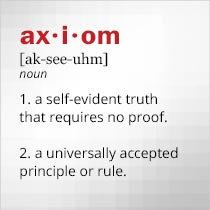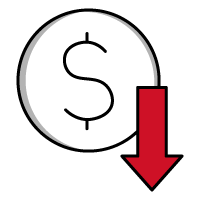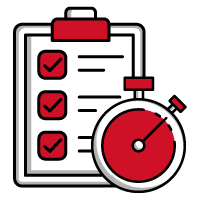Selecting Spectrum and Network Analyzers
February 02, 2024
.jpg) |
Analysis of electronic products can be performed in many ways, from visual checks to sophisticated measurements. The appropriate analyzer can be invaluable when checking components, circuits, and systems, but finding the right analyzer can be challenging. Instrumentation-level analyzers come in many shapes and sizes, including as signal, spectrum, and network analyzers. Knowing what each analyzer does helps in finding the best one for a job.
Spectrum analyzers measure signal magnitude as a function of frequency. They detect known signals, such as radio waves, and unknown signals, such as interference and noise. Spectrum analyzers work with antennas for over-the-air (OTA) measurements of wireless communications signals and radar pulses. As electronic systems grow in complexity, spectrum analyzers must also gain measurement capabilities to detect and display complex signals. Often, spectrum analyzers integrate signal analyzers capable of deciphering advanced modulation formats. Analyzers are also increasingly gaining coverage into the millimeter-wave range (above 30 GHz) as higher-frequency signals are being used in more applications. Units can be installed in a rack or benchtop, as in a factory or laboratory, or in portable housings for in-field measurements.
While signal and spectrum analyzers offer extensive measurement results on OTA signals, they lack the capabilities of network analyzers (NAs) for studying the effects of electronic networks on signals. Various types of NAs, such as scalar network analyzers (SNAs) and vector network analyzers (VNAs), help evaluate high-speed digital and high-frequency analog circuits. By appreciating the different capabilities of NAs and spectrum analyzers, both types of units can form an effective solution for evaluating the performance of an electronic design.
Spectrum/signal analyzers are receivers which can be tuned over wide frequency ranges to detect signals external to the analyzer. They typically show signals on an x-y plot with frequency on the x-axis and signal amplitude level on the y-axis. These analyzers are constructed with numerous technologies, including superheterodyne receivers, vector-tuned receivers, and real-time spectrum analyzers (RTSAs) to show fast-changing signal characteristics. Swept-tuned superheterodyne spectrum analyzers enable study not only of signals of interest but of all detectable signals within the swept-tuned frequency range, including harmonics, spurious, and interference signals.
NAs can also provide wide frequency ranges, with limits established by the NA’s test sets which help route test signals to and from a device under test (DUT). While spectrum/signal analyzers study signals outside the unit, NAs generate test signals within a test set and use those signals to study the performance of a connected DUT. SNAs evaluate signal magnitude at different frequencies while VNAs study both signal magnitude and phase, usually in the form of a DUT’s scattering (S) parameters, which are network-based parameters. Spectrum analyzers study signals applied to an input port, such as from an antenna or test cable.
When comparing spectrum/signal analyzer specifications, frequency range is a good place to start, with the cost of an analyzer typically increasing with frequency. The detail of a frequency measurement will be determined by a spectrum analyzer’s resolution bandwidth (RBW) filters while the quality of a frequency measurement will be related to the precision and stability of the analyzer’s clock oscillator. A spectrum analyzer’s frequency coverage may be specified in either AC- or DC-coupled range. Its sweep time will determine the time needed for a measurement, important for high-volume testing. The sweep time will depend on the frequency span being measured, with wider spans requiring longer measurement times. An analyzer’s frequency can also drift with time, so the unit’s aging rate, usually defined over a wide temperature range, provides useful information for maintaining accurate, long-term measurements.
Concerning signal amplitude levels, a spectrum/signal analyzer can be specified for the maximum number of displayed signals, the maximum level range, and the range over which a reference level can be set. An analyzer’s sensitivity indicates the minimum signal level that can be detected and displayed for a particular frequency. Its level measurement uncertainty is the amount of variation to be expected for level measurement results. An analyzer’s sensitivity is usually competing with its noise floor, as indicated by the unit’s displayed average noise level (DANL), for measurement dynamic range. Preamplifiers are often available as accessories for increased dynamic range and sensitivity.
Mechanical parameters are also important when selecting a spectrum/signal analyzer, not just physical size but types of interconnections on test ports. Analyzers extending to millimeter-wave frequencies, for example, may be equipped with either waveguide interconnections or coaxial connectors and adapters may be needed. Earlier blogs from Axiom Test Equipment, including “Considerations in Choosing a Spectrum Analyzer” in 2016 and “Spectrum Analyzers Help Find Harmful Interference” in 2023 provide additional guidance in sorting through key specifications when selecting a spectrum analyzer for an application.
Specifications useful in comparing NAs typically relate to network-centric parameters such as the S-parameters that evaluate the input and output relationships of two-port electronic networks. NA measurements are typically conducted across narrower frequency ranges than testing with spectrum/signal analyzers. NA measurements deal with well-known signals, generated by the analyzer, while signal and spectrum analyzers detect known and unknown signals. While an NA employs precise calibration techniques and error correction for high measurement accuracy, signal and spectrum analyzers have no error correction, usually relying on the high long-term stability of their internal clock oscillators for good frequency accuracy.
Examining Analyzers
As an example of a spectrum/signal analyzer with solid specifications, the Rohde & Schwarz FSW13 reaches into the lower microwave region with an N female test port connector. The rack-mountable bench-top unit features a large built-in display screen. It is specified for a DC-coupled frequency range from 2 Hz to 13.6 GHz and an AC-coupled frequency range from 10 MHz to 13.6 GHz. RBW filters can be set from 1 Hz to 10 MHz in various increments with frequency shown with resolution as fine as 0.01 Hz. As many as six traces can be shown simultaneously, with a wide dynamic range defined by a noise floor of -103 dBm and maximum input level of +30 dBm (1 W).
For spectrum/signal analyzer measurements outside the laboratory, the Tektronix RSA518A portable spectrum analyzer provides portability with a rechargeable battery and an integrated GPS receiver for mapping. It covers 9 kHz to 18.0 GHz and signal levels from -170 to +40 dBm with an N type female connector. While it lacks its own display screen, it is equipped with a USB interface for connection to a Windows-compatible tablet or personal computer (PC) running the Tektronix SignalVu-PC test software. A 40-MHz acquisition bandwidth and capability to detect signals with duration as short as 15 μs supports pulse measurements and real-time testing to show rapid frequency changes within the measured 40 MHz.
For even higher-frequency spectrum analysis in the field, the Keysight N9962A handheld spectrum analyzer provides 1-Hz resolution from 9 kHz to 50 GHz. Reference levels can be set from -210 to +90 dBm and as many as four traces (three signals and one math trace) shown simultaneously with ±0.20 dB amplitude accuracy. Typical DANL is -118 dBm below 2 MHz and -124 dBm or better from 2 MHz to 50 GHz.
For studying through a network rather than through the air, the Tektronix TTR506A VNA tunes from 100 kHz to 6 GHz with 1-Hz resolution. It can make magnitude and phase measurements on one- and two-port networks using all four S-parameters. Test signal levels can be set from -50 to +10 dBm with ±1.7-dB typical level accuracy. This compact VNA uses an external PC for control and display with a USB port for the connection. It employs BNC female connectors for reference, bias, and trigger connections. For testing networks in the millimeter-wave frequency range, the Keysight E8364C VNA covers the wide frequency range of 10 MHz to 50 GHz with 2.4-mm male connectors. It can be outfit with a variety of test sets for flexibility when biasing active components and triggering different circuits.
Both spectrum/signal analyzers and network analyzers provide invaluable insights into high-frequency analog and high-speed-digital (HSD) electronic designs. Because both types of analyzers are capable of wide dynamic ranges over wide bandwidths, they have become workhorse test instruments in the field and on the production line. Few modern high-frequency or HSD electronic products are ready for release until they have undergone testing with one or both types of analyzers. To find out more about which analyzers will meet a specific set of test requirements, please visit the Axiom Test Equipment website.
Back to BLOG








